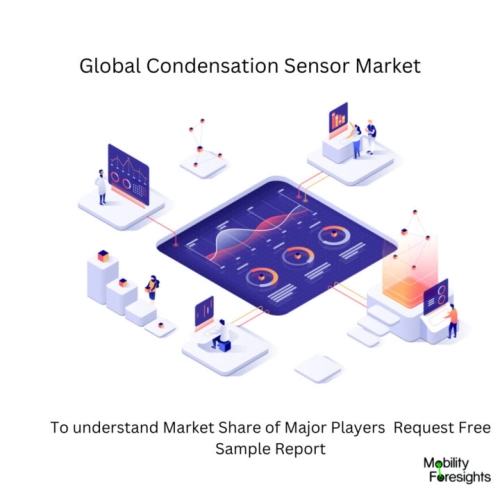
- Get in Touch with Us

Last Updated: Apr 25, 2025 | Study Period: 2024-2030
An electronic device known as a condensation sensor monitors the humidity in its surroundings and then transforms the data into an appropriate electrical signal.
Size and functionality of humidity sensors vary greatly; some are available in portable devices (like smartphones), while others are integrated into bigger embedded systems (such as air quality monitoring systems).
Relative humidity (RH) sensors and absolute humidity (AH) sensors are two categories that can be used to categorise condensation sensors since they each employ a different approach to determine humidity.
The maximum amount of humidity for air at a certain temperature is compared to the live humidity reading at that temperature to determine the relative humidity.
As a result, in order to calculate relative humidity, RH sensors need to measure temperature. Absolute humidity, on the other hand, is calculated independently of temperature.
Capacitive and resistive condensation sensors are the two types of RH sensors most frequently used. Capacitive sensors measure the capacitanceâor the capacity to store an electric chargeâof a thin metal strip sandwiched between two electrodes.
The rate of capacitance change in the metal is directly proportional to the change in humidity in the environment of the sensor. After being amplified, the difference in charge (voltage) caused by a rise in humidity is subsequently transmitted to the inbuilt computer for processing.
Different principles govern the operation of resistive confirmation sensors. These sensors make use of a tiny polymer comb that grows and shrinks in size in response to humidity variations, which has an immediate impact on the system's capacity to store charge.

Global condensation sensor market accounted for $XX Billion in 2022 and is anticipated to reach $XX Billion by 2030, registering a CAGR of XX% from 2024 to 2030.
The SMT Condensation Sensor measures the dielectric constant of the medium surrounding the sensor to detect the presence of minute amounts of water or ice. The non-invasive sensor is ideal for checking the levels of moisture in wood, stone, and concrete as well as condensation, frost, and moisture content.
Water ions are connected to horizontal planar sensing components by a fringing electric field. The ions, which serve as the capacitor's dielectric medium, are exposed to the electric field when condensation or frost occurs on the sensor grid.
| Sl no | Topic |
| 1 | Market Segmentation |
| 2 | Scope of the report |
| 3 | Abbreviations |
| 4 | Research Methodology |
| 5 | Executive Summary |
| 6 | Introduction |
| 7 | Insights from Industry stakeholders |
| 8 | Cost breakdown of Product by sub-components and average profit margin |
| 9 | Disruptive innovation in the Industry |
| 10 | Technology trends in the Industry |
| 11 | Consumer trends in the industry |
| 12 | Recent Production Milestones |
| 13 | Component Manufacturing in US, EU and China |
| 14 | COVID-19 impact on overall market |
| 15 | COVID-19 impact on Production of components |
| 16 | COVID-19 impact on Point of sale |
| 17 | Market Segmentation, Dynamics and Forecast by Geography, 2024-2030 |
| 18 | Market Segmentation, Dynamics and Forecast by Product Type, 2024-2030 |
| 19 | Market Segmentation, Dynamics and Forecast by Application, 2024-2030 |
| 20 | Market Segmentation, Dynamics and Forecast by End use, 2024-2030 |
| 21 | Product installation rate by OEM, 2023 |
| 22 | Incline/Decline in Average B-2-B selling price in past 5 years |
| 23 | Competition from substitute products |
| 24 | Gross margin and average profitability of suppliers |
| 25 | New product development in past 12 months |
| 26 | M&A in past 12 months |
| 27 | Growth strategy of leading players |
| 28 | Market share of vendors, 2023 |
| 29 | Company Profiles |
| 30 | Unmet needs and opportunity for new suppliers |
| 31 | Conclusion |
| 32 | Appendix |